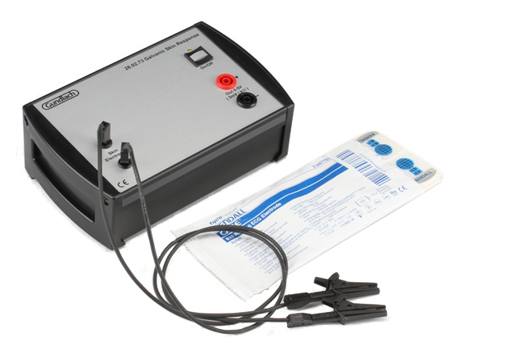

Data is acquired with sampling rates between 1 – 10 Hz and is measured in units of micro-Siemens (μS). Skin conductance is captured using skin electrodes which are easy to apply. Different EDA sensors allow different means of transmission, and the choice of each will depend on the kind of research you’re carrying out.

Either way, the signal is sent through the electrode, to the wire (usually lead) that passes the information to the EDA device.įrom here the data is either stored within the device to be later uploaded, is transmitted wirelessly to a computer system, or the signal is sent through a further wired connection to a computer. Some electrodes also come prepackaged with ionic gel that can increase the signal fidelity, or ionic gel can be applied to achieve the same effect. Ag/AgCl electrodes are used as they are cheap, robust, safe for human contact, and of course are able to accurately transmit the signal from the ionic activity. Most modern EDA electrodes have an Ag/AgCl (silver-chloride) contact point with the skin. What you need to know about EDA sensorsĪs EDA measurements work by detecting the changes in electrical (ionic) activity resulting from changes in sweat gland activity, the electrodes must be sensitive to these changes, and able to transmit that information to the recording device. It can be used as an additional source of insight to validate self-reports, surveys, or interviews of participants within a study. Skin conductance therefore offers direct insights into autonomous emotional regulation. Instead, it is modulated autonomously by sympathetic activity which drives aspects of human behavior, as well as cognitive and emotional states. Skin conductance is not under conscious control. The amount of sweat glands varies across the human body, but is the highest in hand and foot regions (200–600 sweat glands per cm2 ), where the EDA signal is typically collected from. While sweat secretion plays a major role for thermoregulation and sensory discrimination, changes in skin conductance are also triggered robustly by emotional stimulation : the higher the arousal, the higher the skin conductance. This connection of emotional response to EDA signal has been explored in thousands of articles in the 120+ years since this seminal finding. Vigouroux was the first researcher to uncover a link between mental state and EDA activity, finding an association with the level of sedation in patients and skin resistance. The EDA signal is therefore not representative of the type of emotion, but the intensity of it. It is noteworthy that both positive (“happy” or “joyful”) and negative (“threatening” or “saddening”) stimuli can result in an increase in arousal, and in an increase in skin conductance – any dimension of emotional response can lead to these detectable changes. Research has shown how this is linked to emotional arousal. Our level of emotional arousal changes in response to the environment and setting we’re in – if something is scary, threatening, joyful, or otherwise emotionally relevant, then the subsequent change in emotional response that we experience also increases eccrine sweat gland activity. The EDA signal can also be reflective of the intensity of our emotional state, otherwise known as emotional arousal. The signals that are produced by the sympathetic nervous system lead to a change in the Skin Conductance Response (SCR), which is what is often looked at by researchers. While EDA is also linked to the regulation of our internal temperatures, research has also repeatedly shown the strong association this signal has with emotional arousal. This can be done with EDA devices that measure the electrical signal recorded by electrodes applied to the skin.


This data is collected by applying a low, undetectable, and constant voltage to the skin and then measuring how the skin conductance varies. Electrodermal activity (EDA sometimes known as galvanic skin response, or GSR) refers to the variation of the electrical conductance of the skin in response to sweat secretion (often in minute amounts).


 0 kommentar(er)
0 kommentar(er)
